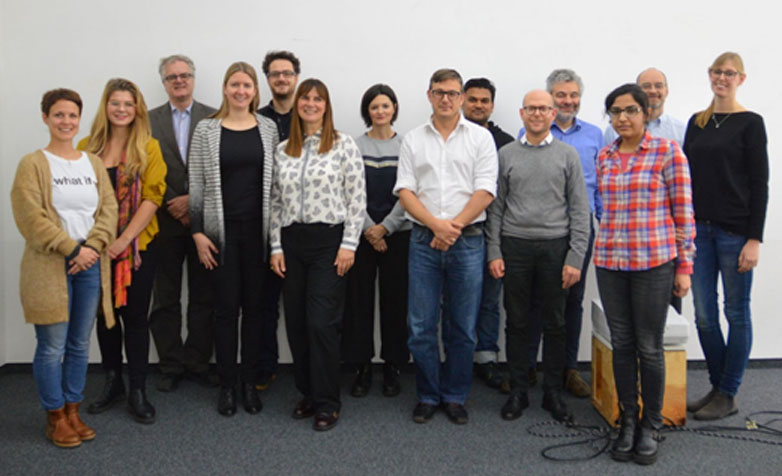FRESHINDEX NEWS
FreshIndex Looks ahead – 2020 plans and beyond
High user acceptance and plenty of impetuses for the further development of the FreshIndex app during the test phase in summer 2019 confirmed the work done so far and motivates the project partners for their way ahead. Their ultimate goal is to have the dynamic best-before date available to all retail customers.
Summing up on FreshIndex
Along with December 2019, the project “FreshIndex – Research into a dynamic best-before date for optimizing the food supply chain” funded by the Federal Ministry of Education and Research in the frame of the KMU-NetC Programme has come to an end. During the last two years, the project partners arconsis, GS1 Germany, University of Applied Sciences Bonn-Rhein-Sieg, METRO and University of Bonn under the leadership of the startup company tsenso have laid important foundations for the market launch of a dynamic best-before date. Project activities culminated in autumn 2019 in the extensive testing phase with customers.
In interviews with 143 customers in four METRO stores, the project partners received comprehensive insights into whether and to what extent FreshIndex influences trust through increased transparency and how they experience the use of the app. While these interviews confirmed that the topics of food traceability and avoidance of thrown away food hit a nerve in the population with a safe assessment of the remaining shelf life, customers also provided suggestions for the further development of the dynamic best-before date. Suggestions included additional services such as combining a fresh alarm or recipe tips for the available products. These will now be taken into account when preparing the follow up activities.

The FreshIndex and FreshAnalytics Consortium at the final FreshIndex Meeting in November
Looking Ahead: FreshAnalytics
Until the actual freshness and shelf life is visible in all supermarkets, there are a number of challenges to be mastered: starting with the scientific data collection of spoilage processes for various foods, the seamless monitoring of storage and transport temperatures from the producer to the cooling shelf and finally the customer-friendly display of the dynamic best-before date using an app. In the background, there are high demands on data management in terms of the amount of real-time and statistical data.
Whereas project partners focused during the FreshIndex project on the development of the algorithms and the underlying models allowing for the seamless monitoring of storage and transport temperature as well as the analysis of transmitting sensor data via GS1 standards along the whole supply chain, the follow up project FreshAnalytics will work on a digital basic system for uniform data management along the food chain and providing a food-specific tool library. The FreshAnalytics partnership is composed of tsenso, arconsis, GS1 Germany, University of Siegen and TH Deggendorf. To achieve the nationwide introduction of the dynamic best-before date, the process flow must be compatible with existing standards and should be able to be integrated into existing management systems in a way that conserves resources.
One of the first outcomes of FreshAnalytics is a questionnaire in order to find out for which use cases and fruit/vegetable categories a dynamic best-before date and quality statements are of most relevance. Please take 5 minutes and have a look a the questionnaire by clicking the button below:
Please take 5 minutes and have a look at the questionnaire
Looking back on the last years, Matthias Brunner reflects about the speed of action of the Fresh Index project:
 At the end of 2016, I designed the first concept of FreshIndex as part of the METRO / Techstar Accelerator. This November I was able to discuss real data from the practical test at the Sustainability Summit of the Consumer Goods Forum with leading companies in the food industry.”
At the end of 2016, I designed the first concept of FreshIndex as part of the METRO / Techstar Accelerator. This November I was able to discuss real data from the practical test at the Sustainability Summit of the Consumer Goods Forum with leading companies in the food industry.”
![]()
If the speed of action continues in the same pace as for the FreshIndex project, the goal of all customers profiting from the dynamic best-before date shouldn’t sound too ambitious any longer. ![]()


